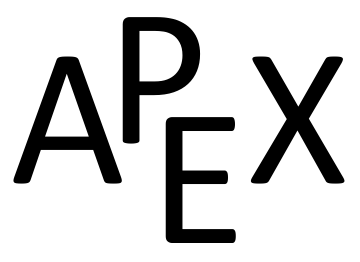The methods developed in this section so far give a straightforward method of finding equations of normal lines and tangent planes for surfaces with explicit equations of the form
\(z=f(x,y)\text{.}\) However, they do not handle implicit equations well, such as
\(x^2+y^2+z^2=1\text{.}\) There is a technique that allows us to find vectors orthogonal to these surfaces based on the
gradient.
Recall that when
\(z=f(x,y)\text{,}\) the gradient
\(\nabla f = \la f_x,f_y\ra\) is orthogonal to level curves of
\(f\text{.}\) An analogous statement can be made about the gradient
\(\nabla F\text{,}\) where
\(w= F(x,y,z)\text{.}\) Given a point
\((x_0,y_0,z_0)\text{,}\) let
\(c = F(x_0,y_0,z_0)\text{.}\) Then
\(F(x,y,z) = c\) is a
level surface that contains the point
\((x_0,y_0,z_0)\text{.}\) The following theorem states that
\(\nabla F(x_0,y_0,z_0)\) is orthogonal to this level surface.
To understand why
Theorem 13.7.18 is true, recall the method of implicit differentiation given in
Subsection 13.5.2. A level surface
\(f(x,y,z)=0\) can be viewed as defining
\(z=g(x,y)\) implicitly. We found that the partial derivatives of
\(z\) with respect to
\(x\) and
\(y\) are then given by
\begin{equation*}
\plz{z}{x} = g_x(x,y) = -\frac{f_x(x,y,z)}{f_z(x,y,z)}\quad \plz{z}{y} = g_y(x,y) = -\frac{f_y(x,y,z)}{f_z(x,y,z)}\text{.}
\end{equation*}
If we plug these values into the tangent plane equation
\begin{equation*}
z = g(a,b)+g_x(a,b)(x-a)+g_y(a,b)(y-b)
\end{equation*}
we get, with \(c=g(a,b)\text{,}\)
\begin{equation*}
z = c - \frac{f_x(a,b,c)}{f_z(a,b,c)}(x-a)-\frac{f_y(a,b,c)}{f_z(a,b,c)}(y-b)\text{.}
\end{equation*}
If we move everything to the left-hand side of the equation and multiply through by \(f_z(a,b,c)\text{,}\) we get
\begin{equation*}
f_x(a,b,c)(x-a)+f_y(a,b,c)(y-b)+f_z(a,b,c)(z-c)=0\text{,}
\end{equation*}
which is the equation of a plane with normal vector \(\nabla f(a,b,c)\text{.}\)
The next section investigates another use of partial derivatives: determining relative extrema. When dealing with functions of the form
\(y=f(x)\text{,}\) we found relative extrema by finding
\(x\) where
\(\fp(x) = 0\text{.}\) We can
start finding relative extrema of
\(z=f(x,y)\) by setting
\(f_x\) and
\(f_y\) to 0, but it turns out that there is more to consider.

